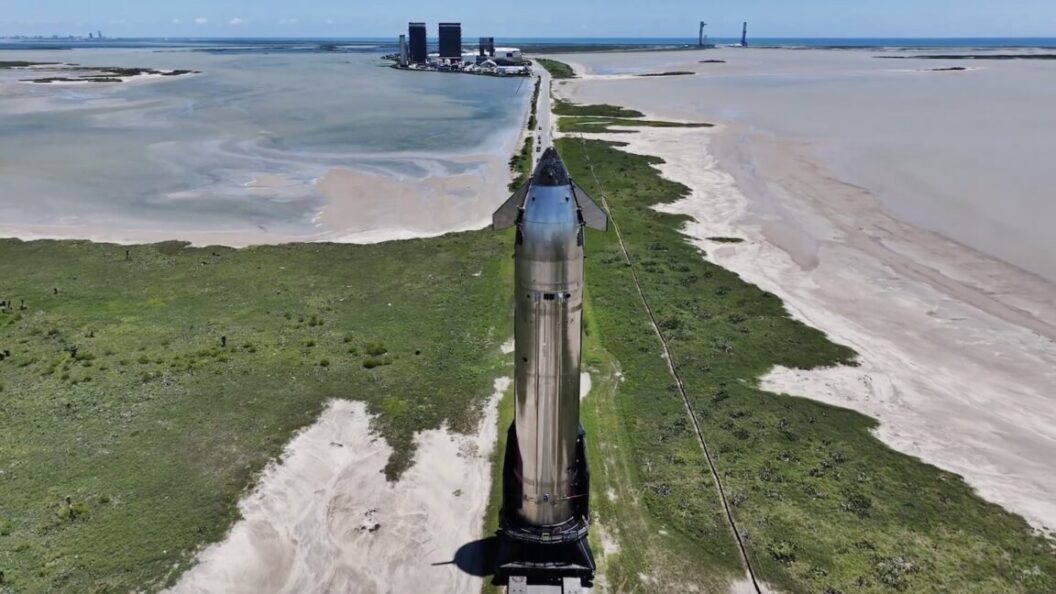SpaceX Receives FAA Approval for Next Starship Test Flight
The Federal Aviation Administration (FAA) has approved SpaceX to move forward with the next test flight of its ambitious Starship rocket, marking a significant step in the program after a series of setbacks earlier this year. The upcoming test, designated as Flight 9, could take place as soon as next week, potentially reigniting interest in the program that aims to push the boundaries of space exploration.
Background on Starship’s Challenges
The previous two test flights of the Starship Block 2 model earlier this year encountered critical failures that have delayed the project’s timeline. During both the January and March flights, the rocket’s upper stage experienced engine shutdowns that led to loss of control, resulting in the spacecraft breaking apart and scattering debris over the Bahamas and Turks and Caicos Islands.
In a statement announcing the launch approval, the FAA confirmed that SpaceX has successfully met all safety, environmental, and licensing regulations required for the mission. The company’s efforts to rectify the issues from previous flights are seen as vital to restoring confidence not only in the Starship program but also in its broader goals.
Flight Details and Expectations
While SpaceX has not officially set a launch date, notifications have been issued to pilots and mariners to avoid specific areas in the Gulf of Mexico, indicating a potential launch target for the evening of May 27. The rocket is scheduled to take off from SpaceX’s Starbase in Texas, a strategic location near the U.S.-Mexico border.
This upcoming flight stands out as it will be the third attempt for the upgraded Block 2 Starship, a more advanced version designed to accommodate the ambitious missions SpaceX envisions, including potential human landings on Mars and NASA’s Artemis program aimed at returning astronauts to the Moon.
Insights into Previous Failures
Investigations into the earlier test flights indicated that the January failure was primarily due to a sequence of fuel leaks and associated fires in the aft compartment of the rocket, which SpaceX attributed to unexpected vibrations. Details regarding the March failure have not yet been disclosed, but reports suggest that the issues may have mirrored those encountered in January.
Understanding these technical challenges is crucial for SpaceX, as resolving them will be a key factor in ensuring the success and safety of future launches. The ability to learn from past errors is essential in a field that demands precision and innovation.
The Broader Implications of Starship
The Starship program holds critical significance not only for SpaceX but also for the future of space exploration. With grand ambitions to send humans to Mars, the success of this next test flight is pivotal. NASA has already selected the Starship system for its Artemis program, which aims for lunar landings and lays the groundwork for human exploration of Mars and beyond.
The successful launch of Flight 9 could provide a much-needed boost to public and investor confidence, revitalizing interest in human spaceflight and reaffirming the United States’ position as a leader in space exploration.
Conclusion: A Reinvigorated Hope for Space Exploration
As SpaceX gears up for its next Starship test flight, the stakes are higher than ever. The recent failures highlighted the challenges inherent in rocket development, but with FAA approval, the company demonstrates resilience and a commitment to overcoming these obstacles. Flight 9 represents more than just a test—it is a stepping stone towards a future where human exploration of other planets may become a reality.
In a world eager for advancements in technology and space exploration, the outcome of this flight could have far-reaching implications, potentially reshaping our understanding of what is possible beyond our planet.









